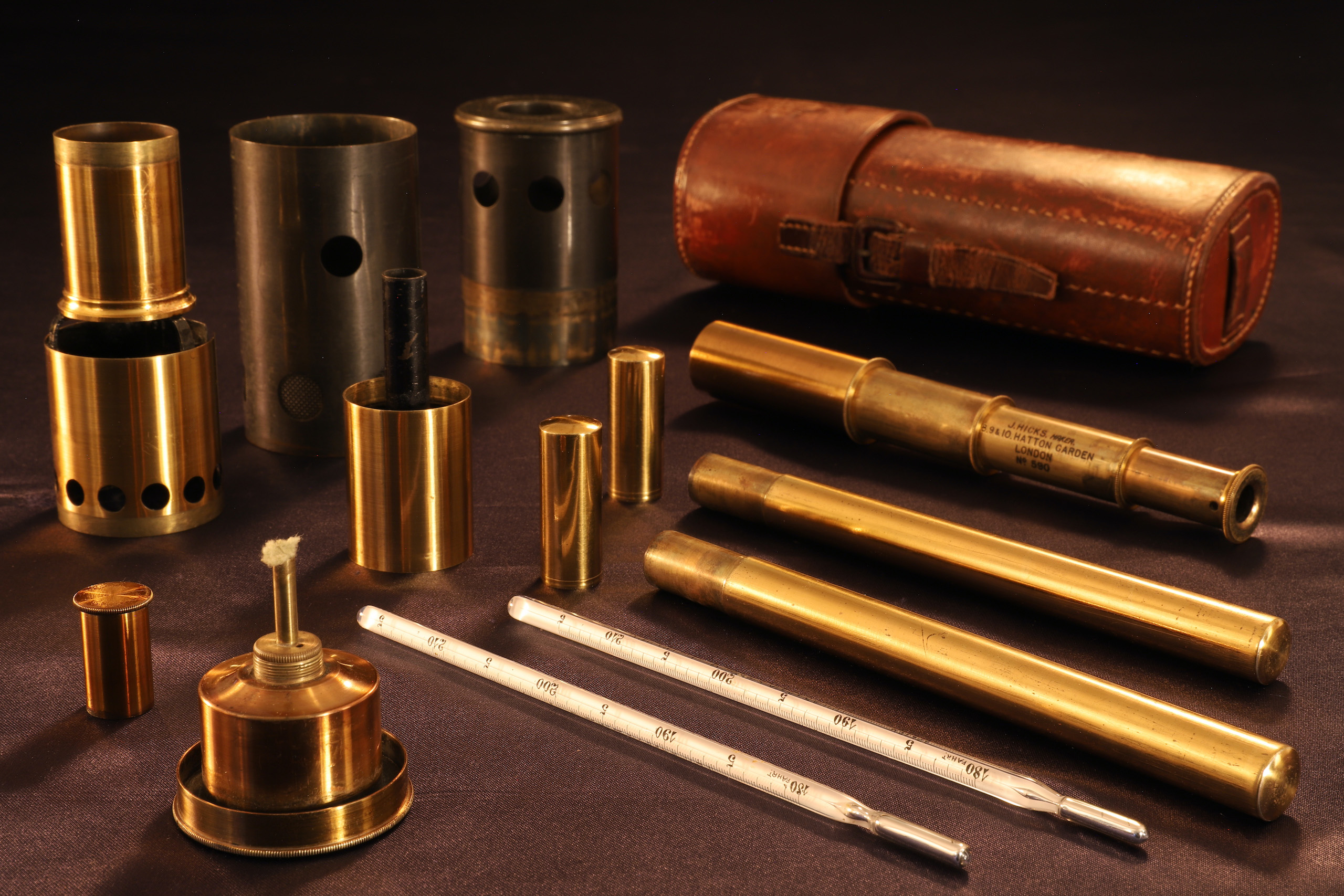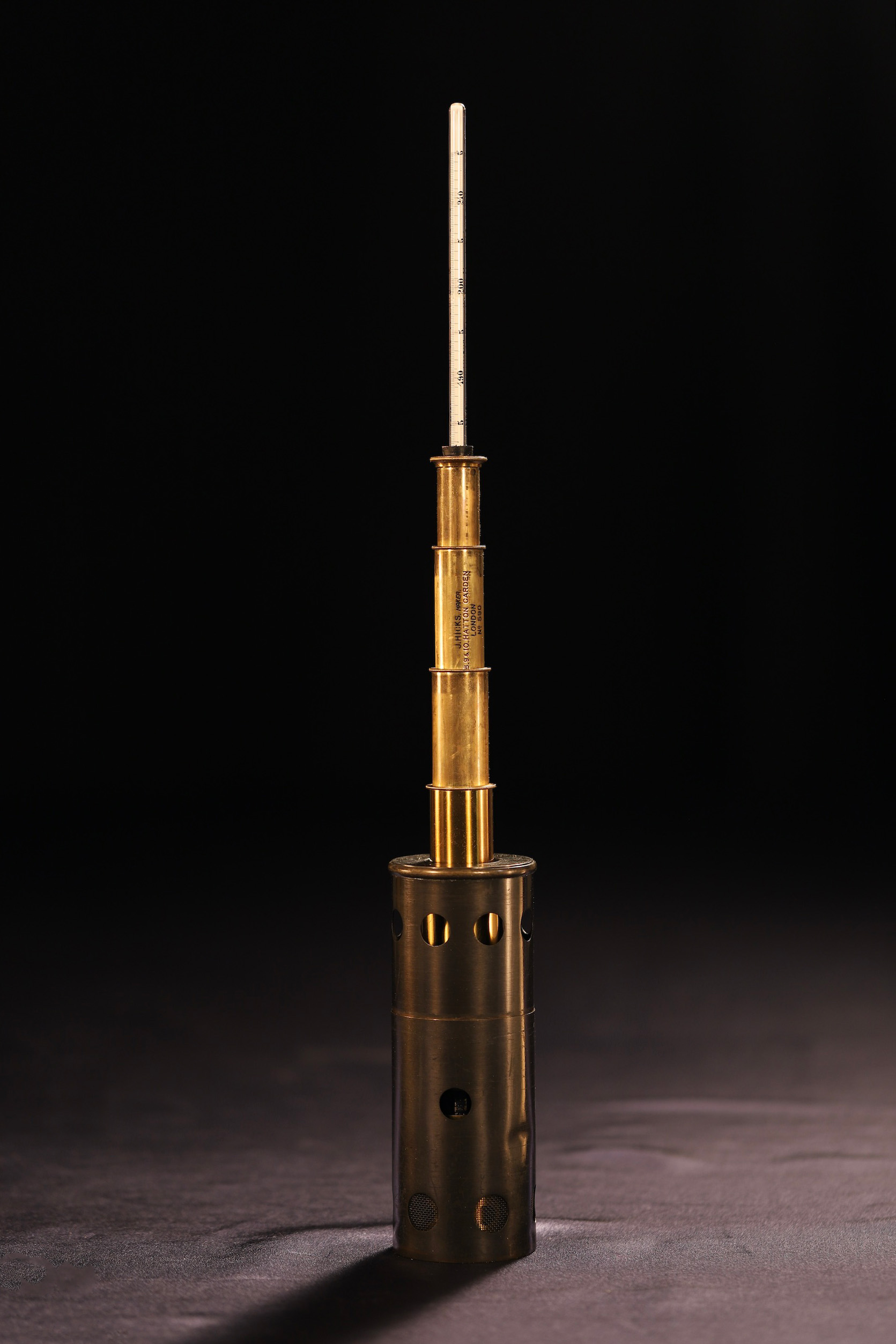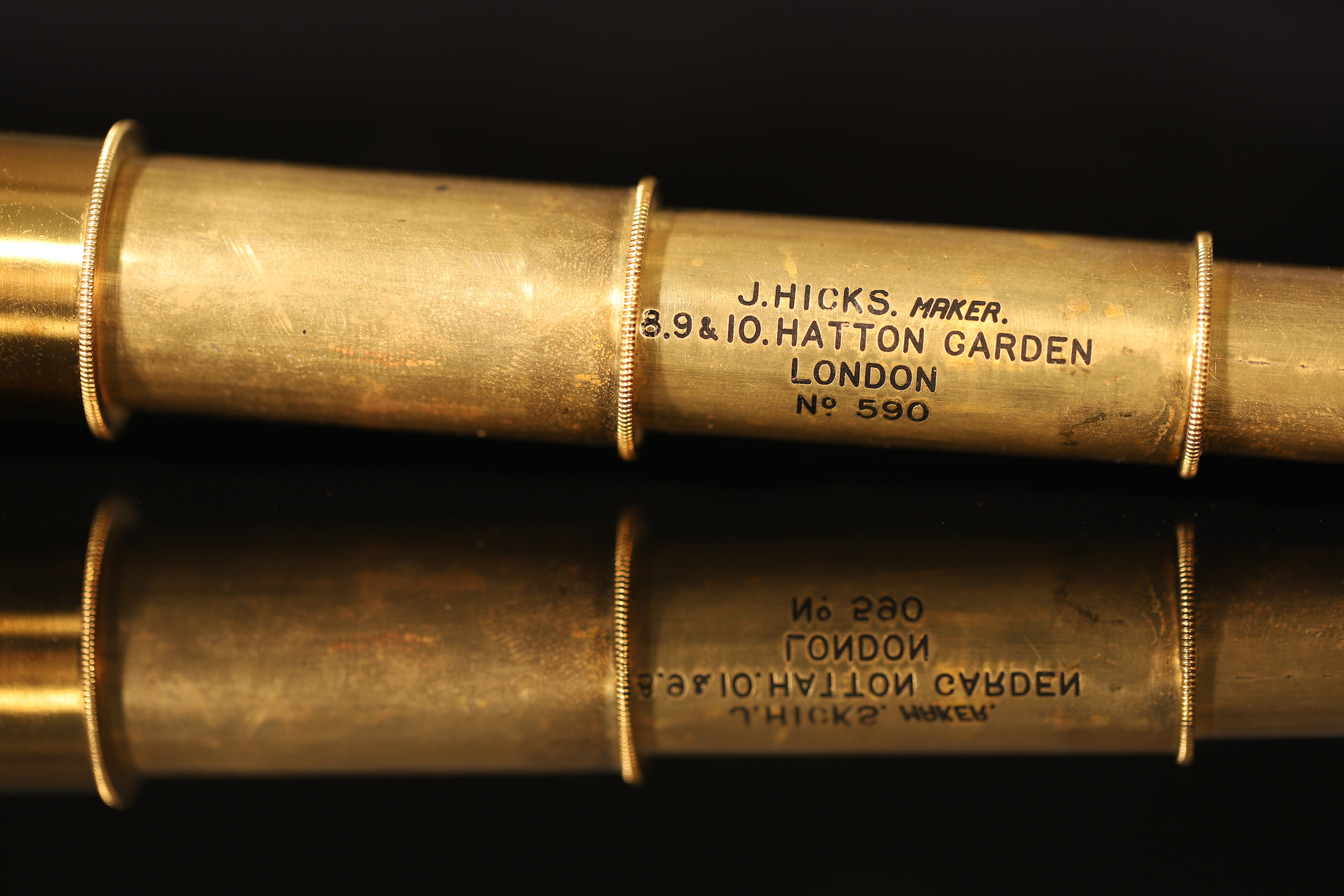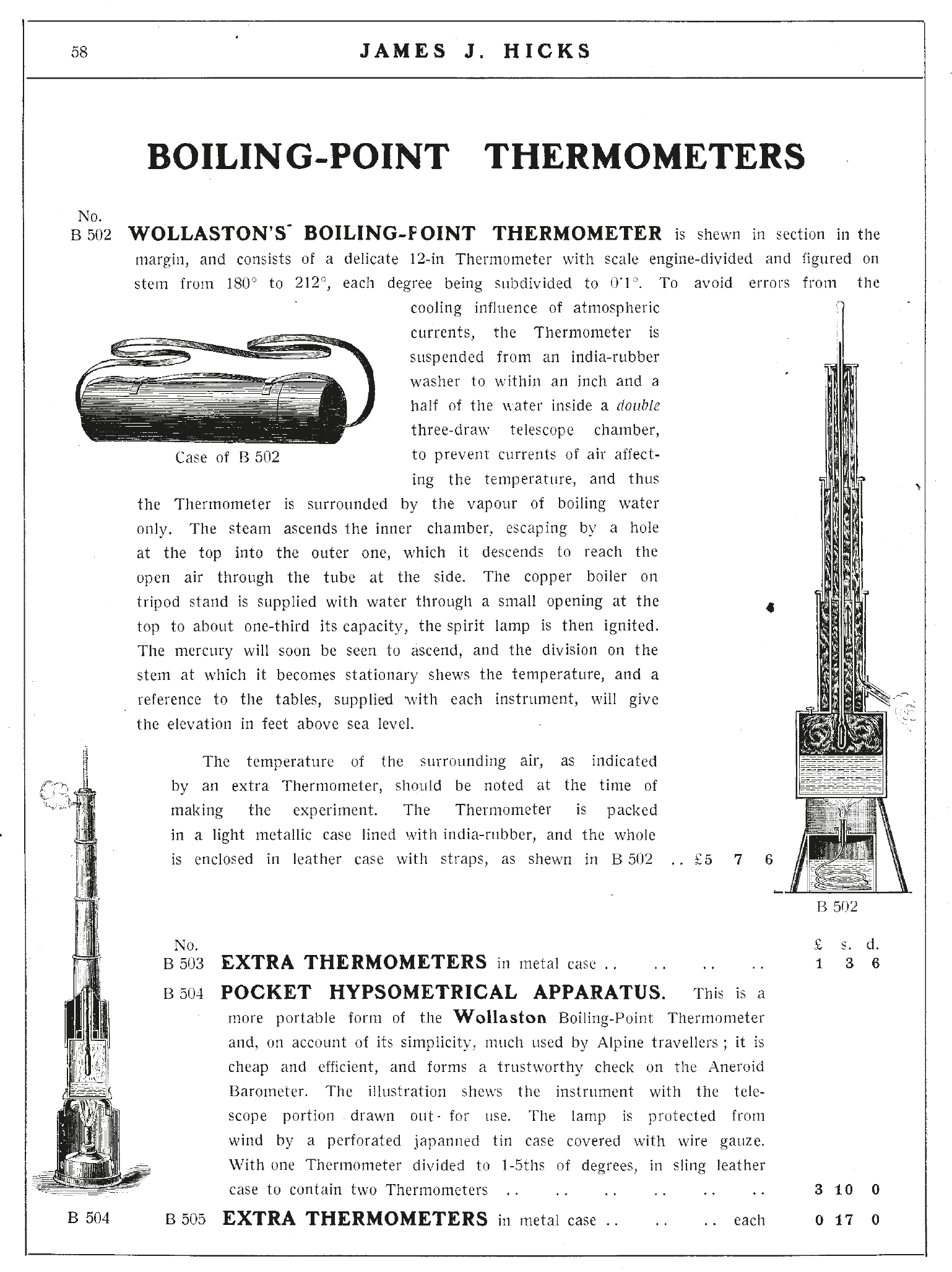A very rare leather cased, lacquered and oxidised brass hypsometer No 590 by J. Hicks, London, c1900
Comprising four draw telescopic top section, the third draw marked “J. Hicks, Maker, 8, 9, & 10 Hatton Garden, London, No 590,” first draw with heat shroud. Spirit burner with integral pushfit end cap, threaded wick cover, wind and flame shroud with lower ventilation ports, water cistern over, supported on three japanned struts. All contained (in transit) within concentrically fitting top and bottom outer shrouds, both with ventilation ports, the lower section with flame stopping gauzes.
Twin engine turned thermometers numbers “750315” and “852427,” calibrated in degrees Fahrenheit with ranges 180° – 215°, finely divided to 1/5th degree, long bulbs with expansion chambers, both marked “J. Hicks, 8, 9, & 10 Hatton Garden, London.”
Contained in finely executed lacquered brass transport tubes, push fit lids.
All contained within the original plum red velvet lined, deep lidded leather transport case with separate compartments for thermometers and hypsometer body, marked with initials “W.J.A,” strap and buckle closure, carry strap loops.
Condition: The main body retaining much original finish, the draws moving smoothly, some ageing, minor oxidation and light marks/abrasions. The oxidised outer shroud with dent to lower half, marks and abrasions, ageing, and patination, though retaining much original finish.
The thermometers in very good unbroken condition, the threads retracted (low temperature), transport tubes with minor marks, points of oxidation, retaining most original lacquered finish.
The plum red velvet lined leather case sound though marked and lightly abraded in places, the fixing strap partially perished though remaining serviceable with good shine and colour overall.
The instrument is complete and, from a visual inspection, would appear to be serviceable.
Comments: This instrument is about identical to those known to have been taken on the Antarctic Expedition of 1901 and the Trans Arctic Expedition 1914 – 17.
For more information about “Hyposometers,” see Antique Pocket Hypsometers Pt I.
Perhaps one of the most interesting instruments I have had the pleasure to examine, particularly so for its completeness and condition, quite apart from its significance and rarity.
Very cleverly designed to fit into what is really quite a small transport case (less than 8” long), it is described as a pocket instrument though the pockets, even at this size, would have to be deep!
The upper part is greatly reduced in length since it more closely resembles the draws of a telescope which collapse, this section is then turned upside down and fitted into the lower burner section, thus producing a very compact object for transport. The whole assembly is then fitted into the outer oxidised heat and wind shrouds, total length (stowed) 6″!
There are several other known examples of this instrument as far as detailed engineering is concerned, variously attributed, including: one marked “Cary, London,” equipped with thermometer no. “12023,” and carrying Royal Geographical Society number “22” in the RGS collection; another marked “Casella, London” held at the Queensland Government Museum, Australia; one more with slightly different execution features boxwood sleeves for the thermometers, and the outer two piece shroud appears japanned rather than oxidised brass – this is marked “ANT. EX.1901,” “M.O.7,” and “HO” with broad arrow, is stated to have been carried on the British Antarctic Expedition led by Scott, and is in the Science Museum, London collection.
Quite in keeping with so many of these instruments, the true maker may remain obscure. It is almost certain that they were all the work of one company but who? Hicks, Cary or Casella? The librarian at the Royal Geographical Society suggests Cary. I had thought Hicks to be the most likely for two reasons: the example in the Vavasseur Archive is signed by him on the main body along with both thermometers, and Hicks had a fine reputation in the making of thermometers. This instrument certainly appeared in Hicks’ catalogues, see image. However, this remains a very open question.
As to numbers produced – this is a highly specialised piece of equipment, so there would not have been that many. The serial no. 590 in practice gives little clue, as it is thought, for example, that Hicks almost certainly numbered his pocket barometers beginning at no. 5000, a practice some makers exercised wishing to convey an impression of commercial success! If Hicks was indeed the originator, there is a chance numbering began at 500.
Vavasseur Archive – not currently for sale



